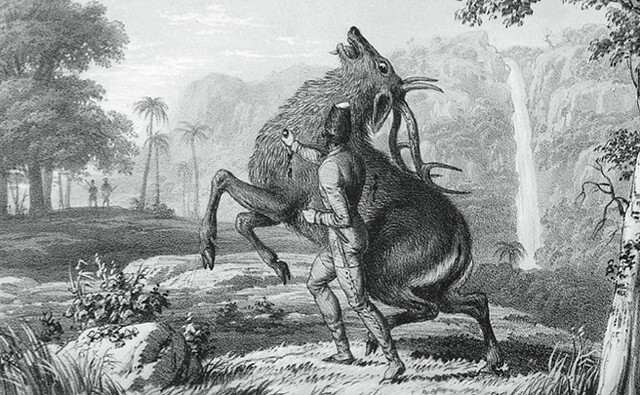Poaching has traditionally been defined as the illegal hunting, killing, or capturing of wild animals, usually associated with land use rights.[1][2][3][4][5]
Until the 20th century, mostly impoverished peasants poached for subsistence purposes, thus supplementing meager diets.[6] By contrast, stealing domestic animals (as in cattle raiding, for example) classifies as theft, not as poaching.[7]
Since the 1980s, the term “poaching” has also referred to the illegal harvesting of wild plant species.[8][9][10]
In 1998 environmental scientists from the University of Massachusetts Amherst proposed the concept of poaching as an environmental crime, defining any activity as illegal that contravenes the laws and regulations established to protect renewable natural resources including the illegal harvest of wildlife with the intention ofpossessing, transporting, consuming or selling it and using its body parts. They considered poaching as one of the most serious threats to the survival of plant and animal populations.[9] Wildlife biologists andconservationists consider poaching to have a detrimental effect on biodiversity both within and outsideprotected areas as wildlife populations decline, species are depleted locally, and the functionality ofecosystems is disturbed.[11]
Sociological and criminological research on poaching indicates that in North America people poach for commercial gain, home consumption, trophies, pleasure and thrill in killing wildlife, or because they disagree with certain hunting regulations, claim a traditional right to hunt, or have negative dispositions toward legal authority.[9] In rural areas of the USA, the key motives for poaching are poverty.[16] Interviews conducted with 41 poachers in the Atchafalaya River basin in Louisiana revealed that 37 of them hunt to provide food for themselves and their families; 11 stated that poaching is part of their personal or cultural history; nine earn money from the sale of poached game to support their families; eight feel exhilarated and thrilled by outsmarting game wardens.[17]
In African rural areas, the key motives for poaching are the lack of employment opportunities and a limited potential for agriculture and livestock production. Poor people rely on natural resources for their survival and generate cash income through the sale of bushmeat, which attracts high prices in urban centres. Body parts of wildlife are also in demand for traditional medicine and ceremonies.[11]
The existence of an international market for poached wildlife implies that well-organised gangs of professional poachers enter vulnerable areas to hunt, andcrime syndicates organise the trafficking of wildlife body parts through a complex interlinking network to markets outside the respective countries of origin.[18][19]
The detrimental effects of poaching comprise:
- Defaunation of forests: predators, herbivores and fruit-eating vertebrates cannot recover as fast as they are removed from a forest; as their populations decline, the pattern of seed predation and dispersal is altered; tree species with large seeds progressively dominate a forest, while small-seeded plant species become locally extinct.[20]
- Reduction of animal populations in the wild and possible extinction.
- The effective size of protected areas is reduced as poachers use the edges of these areas as open-access resources.[21]
- Wildlife tourism destinations face a negative publicity; those holding a permit for wildlife-based land uses, tourism-based tour and lodging operators lose income; employment opportunities are reduced.[11]
- Emergence of zoonotic diseases caused by transmission of highly variable retrovirus chains:
- Outbreaks of the Ebola virus in the Congo Basin and in Gabon in the 1990s have been associated with the butchering of apes and consumption of their meat.[22]
- The outbreak of SARS in Hong Kong is attributed to contact with and consumption of meat from masked palm civets, raccoon dogs, Chinese ferret-badgers and other small carnivores that are available in southern Chinese wildlife markets.[23]
- Bushmeat hunters in Central Africa infected with the human T-lymphotropic virus were closely exposed to wild primates.[24]
- Results of research on wild chimpanzees in Cameroon indicate that they are naturally infected with the simian foamy virus and constitute a reservoir of HIV-1, a precursor of the acquired immunodeficiency syndrome in humans.[25]
(From Wikipedia, February 2015)


